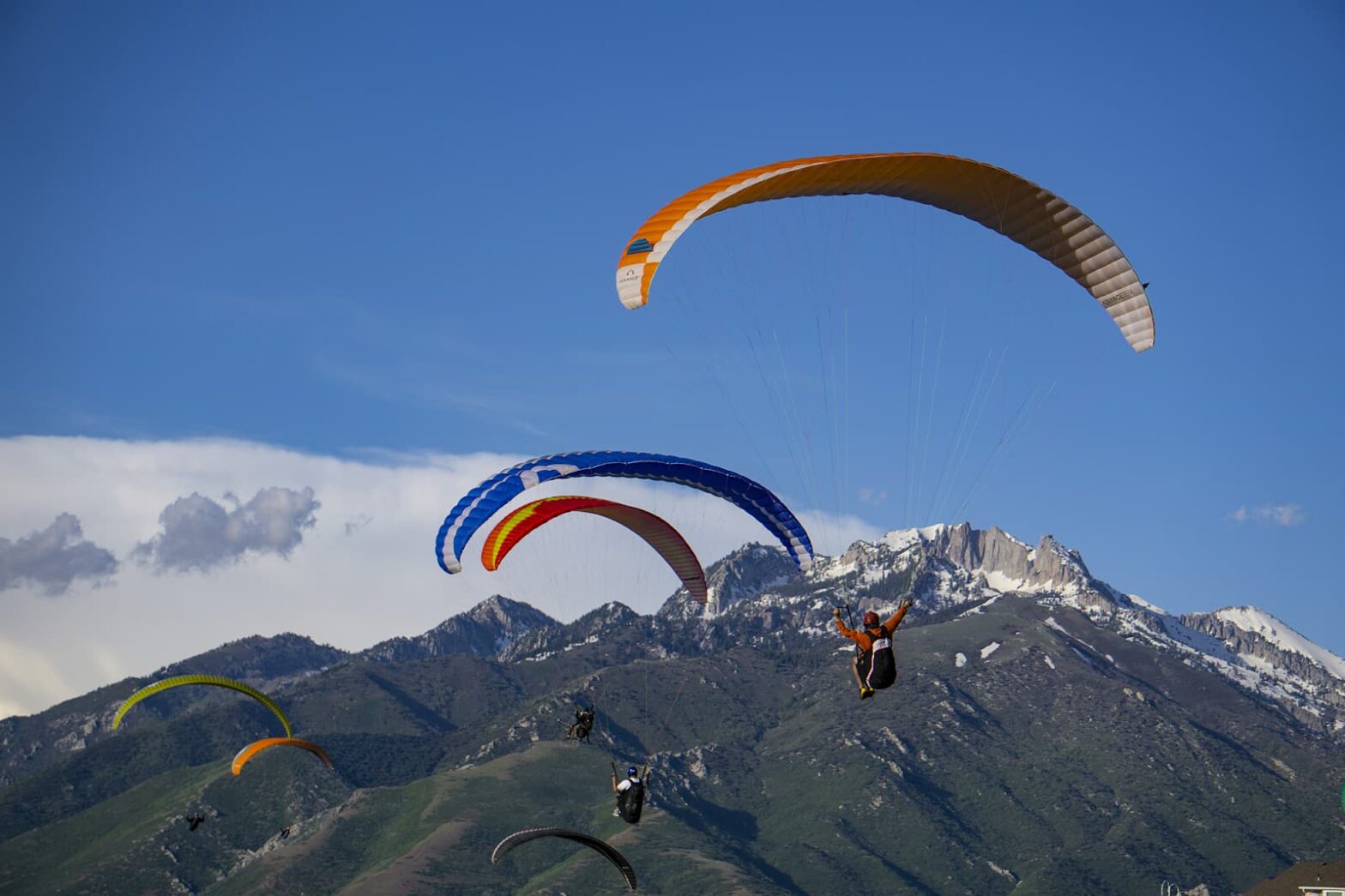Overview of Hang Gliding in Utah
Hang gliding in Utah offers an experience akin to a skyward hike, providing a unique perspective to view the landscape from above. Unlike hiking, this activity offers the serenity of flight without physical exertion, allowing you to glide peacefully over Utah’s diverse terrain.
Prime Locations for Hang Gliding
Utah is home to several renowned locations for hang gliding, with “The Point” – a ridge near I-15 – being a favorite for its consistently favorable conditions. It’s officially recognized as Utah’s Flight Park State Recreation Area, equipped with access roads and facilities, often used for training and prolonged flights. Other notable spots across the state offer diverse experiences, from mountain ridges to open valleys.
Guiding Services and Instruction
For those new to hang gliding, Utah boasts various companies providing services like Southwest Adventure Tours and High Point Hummer & ATV Tours & Rentals. These entities offer beginner lessons, tandem flights, equipment rentals, and sales. They ensure safety and an enjoyable experience, even for first-time gliders.
Historical Context of Hang Gliding in Utah
Utah’s hang gliding history is rich, dating back to the 1920s with balsa wood gliders. Point of the Mountain, especially, evolved from a training ground for military pilots to a world-renowned hang gliding and paragliding hub. The development of this area into a state recreation area highlights its importance in the hang gliding community.
Practical Tips for Beginners
For first-timers, arranging a tandem flight with a certified instructor is advisable. Flight conditions are weather-dependent, with sunrise and sunset offering optimal conditions. Season-appropriate clothing, closed-toe shoes, and protective gear like helmets are essential. Instructors also emphasize safety protocols, including during the COVID-19 pandemic, where masks are required due to proximity.
Environmental and Historical Significance
The environmental and historical significance of Utah’s hang gliding locations is notable. The Point of the Mountain, for instance, transitioned from a motorcycle hill-climbing venue to a protected flight area. This shift reflects the changing recreational use and conservation efforts to preserve these areas for aerial sports.
Comparative Table: Hang Gliding Locations and Services in Utah
| Location/Service | Features | Suitability | Additional Services |
|---|---|---|---|
| Point of the Mountain | Consistent soaring conditions, state recreation area | Highly suitable | Training, Tandem flights |
| Southwest Adventure Tours | Guided tours, comprehensive instruction | Highly suitable | Equipment rentals, Sales |
| Southern Utah Scenic Tours | Specialized in Southern Utah landscapes | Suitable | Customized tour packages |
| High Point Hummer & ATV Tours & Rentals | Adventure-focused tours | Suitable | Equipment rentals, ATV tours |
| Cloud 9 | Specializes in training and equipment | Highly suitable | Lessons, Equipment sales |
| Nice Sky Adventures | Focused on tandem experiences | Highly suitable | Tandem flights, Beginner-friendly |
| Utah Paragliding | Comprehensive paragliding services | Suitable | Training, Equipment sales |
| Monroe/Richfield area (Red Rocks Fly event) | Annual fly-in event, high mountains | Moderate | Event-focused flying experience |
Video Guide
To answer your questions in more detail, we have prepared a special video. Enjoy watching it!
Best Glider Wing Design: Balancing Performance and Practicality
In the realm of hang gliding, the wing design significantly influences a glider’s performance. This 200-word section focuses on identifying the characteristics of the best glider wing design, balancing aerodynamic efficiency with practical considerations. The ideal wing design for a hang glider incorporates a blend of high lift-to-drag ratio for maximum glide efficiency, structural integrity for safety, and maneuverability for handling ease.
Advanced gliders often feature a wing design with a streamlined aerofoil shape, reducing drag and optimizing lift. Materials used in these designs, such as lightweight composites, enhance performance while maintaining strength. However, the wingspan is a critical factor; longer wingspans increase lift-to-drag ratios, aiding in longer glides, but can make handling and ground transportation more challenging. Shorter wingspans, conversely, offer greater maneuverability and are more practical for casual pilots or those with storage and transportation constraints.
The best glider wing design is also one that aligns with the pilot’s skill level and flying goals. For instance, a beginner may prioritize stability and ease of control over high-performance metrics, opting for a design with more forgiving flight characteristics. Conversely, experienced pilots seeking long-distance flights might prefer high-performance designs with greater lift-to-drag ratios and advanced control features.
In summary, the optimal glider wing design varies based on individual needs and preferences, blending aerodynamic principles with practicality to provide an enriching flying experience.
Conclusion
In conclusion, Utah offers an array of hang gliding experiences, suitable for both beginners and experienced pilots. With its rich history, diverse landscapes, and comprehensive guiding services, Utah stands out as a premier destination for hang gliding enthusiasts.
